The U.S. Army’s Lift-Anything, Go-Anywhere Helicopter
Nobody forgets a ride on the CH-47 Chinook.
/https://tf-cmsv2-smithsonianmag-media.s3.amazonaws.com/filer/4a/6f/4a6f2dec-9589-4111-ba88-126a0f777f1d/04a_sep2019_loadslinghummertrailer_live.jpg)
Through more than 58 years of peace and war, the Boeing Vertol CH-47 Chinook has performed as a modern army’s lifeline, a status even its builders couldn’t have envisioned when it first took to the sky in 1961. The helicopter’s first combat experience came in 1965, when the aircraft carrier USS Boxer arrived in Vietnam with 57 CH-47As below its deck, and wherever U.S. (and many foreign) armies have been since, the Chinook has followed. With powerful engines and tandem rotors, the Chinook has hauled everything from combat troops to heavy artillery to boats, and has flown rescue as well as transport missions. These stories, told by the people who flew and crewed them and by those they served, illustrate why the U.S. Army plans to employ the Chinook until 2060, making it an airframe that will have lasted for nearly a century of service.
Medevac in the Mist
Gary Roush, Pilot, CH-47A
You could see Nui Ba Den [Black Virgin Mountain] for over 100 miles from every direction. It was the most prominent feature in the III Corps [Mekong Delta] region. The U.S. owned the top of it, and the Viet Cong owned the rest of it—so the only way to get supplies up to the troops on the summit was to bring them in on Chinooks, which could lift a lot more and fly at high altitude far better than any other helicopter. One of the greatest challenges of the mission—outside of the altitude—was the small landing zone with radio towers near it. The other was the weather, particularly in August and September, during the monsoon. Despite the risks, I liked the mission to Nui Ba Den, so I always volunteered to go. My unit flew supplies to the top of the mountain nearly every day. None of the flights were really routine, but one was a real standout.
In the early morning hours of August 18, 1968, hundreds of Viet Cong attacked the American base at the summit of Nui Ba Den and overran the wire, with the goal of destroying the vital communications equipment atop the mountain. A few hours later, 15 dead enemy fighters littered the small base, and the rest of the force was in retreat. The Viet Cong attack had killed eight Americans and wounded 23. With the monsoon in full swing, the upper part of the mountain was shrouded in mist. Dustoff [medical evacuation] Hueys tried to get to the wounded, but failed due to the conditions. The ground commander was begging us to make an attempt—unlike the Hueys, a single Chinook could transport all 23 wounded.
After a number of attempts, we also were ready to give up—the visibility was practically zero. Then one of the crew came up with the idea of flying down to the base of the clouds and “hovering up,” with the crew keeping us just within sight of the tops of trees. So down we went, about 1,500 feet beneath the helipad. With the enemy no doubt all around us on the mountain, we slowly climbed back up all the way to the helipad. When we set down and looked around, it was like an eerie movie. There were dead enemy all over the place, and our rotors were whipping the mist around. The ground guys immediately loaded all 23 injured, and then we ascended back into the sky, did a 180-degree turn, flew off in zero-visibility till I was sure I was clear of everything, then descended. I never reported the mission as I thought I’d get court-martialed for putting so many at such extreme risk.
/https://tf-cmsv2-smithsonianmag-media.s3.amazonaws.com/filer/48/b2/48b2820d-83db-4da7-a6c6-8864094f3da4/04h_sep2019_loadslingformationdf-st-85-10549_live.jpg)
Beer, Bullets, Beans, and Beyond
John Such, Pilot, CH-47A
I always thought that the Chinook was the best, most versatile helicopter in the military—and over the decades I flew all types of helicopters. We really saw the versatility of the Chinook in Vietnam. We hauled everything: troops, supplies, even bulldozers, and we also did [medical evacuations]. The Army even converted four Chinooks to gunships, the ACH-47s.
In Vietnam, I served in I Corps, in the north. We flew all day long, typically from six in the morning until around seven at night, and there was always the possibility of going out again and doing flare drops at night. Our mission day usually started by moving a battery of 105mm howitzers. We’d move a battery from one hilltop to another hilltop. We’d sling the howitzer beneath the Chinook with its ammo bag, and the gun crew inside the aircraft. Then we’d bring them food, more ammunition, generators, diesel fuel, and water. With the move complete, we’d go into general resupply for everyone else in the area, flying anything and everything to anyone who needed it. We called it “beer, bullets, and beans.” With that done, with fuel burned down, we’d go into more specialized movements of really heavy loads like the 155mm howitzer. We could only lift that with a lot of fuel burned down. The heaviest loads we typically carried were bulldozers, which we could only lift if we were just about out of fuel. We’d latch onto the bulldozer, fly it to its location, then immediately fly to the closest refueling location as we were flying on vapors at that point.
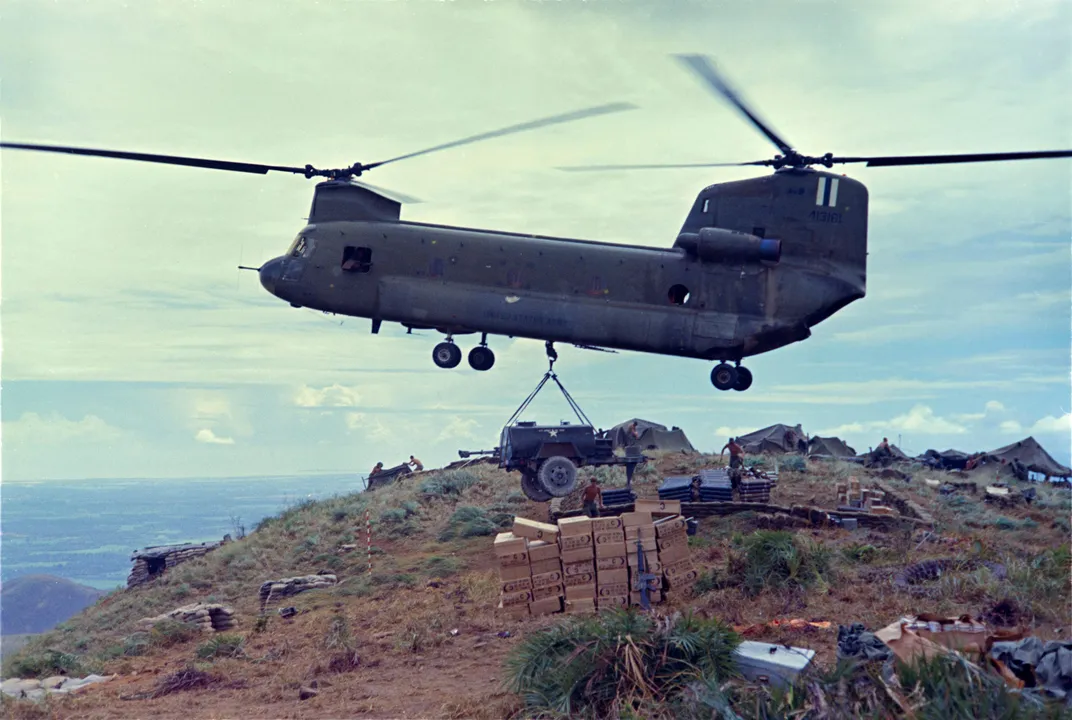
“The Coolest Thing I’ve Ever Seen!”
Pat Kinser, Passenger, CH-47D
All of us grunts loved the Chinooks in Afghanistan. They’re powerful and can hold a ton of people and gear. I saw them carry everything from mail to water, to howitzers to humanitarian and medical supplies, to goats and chickens for our attached Afghan security forces to eat during the combat operations we did with them. With the altitude and the heat, and the necessity for heavy loads, it’s what you had to use over there. There was no other option.
I’ll never forget this one insert. We were going to a remote village near the border with Pakistan that was over 9,000 feet in altitude, and it was summer, so it was hot and the air was thin. We had an entire platoon with food and water for over a week. The village was on the side of a really steep mountain and the pilots brought the Chinook in and then the ramp went down and everyone went out. When I stepped off the ramp onto the ground I heard, “That’s the coolest thing I’ve ever seen!”—one of the Marines was yelling over the screaming of the engines. I looked up to see that the Chinook’s front wheels were a good 20 feet above the steep mountainside, and its rear ramp was just a few inches off of it. But the pilots and crew kept it dead-still, as if it were sitting on flat earth. The crew on the back were just so nonchalant and dead-calm as they helped us offload all our food and water. Then the beast spun up and roared away.
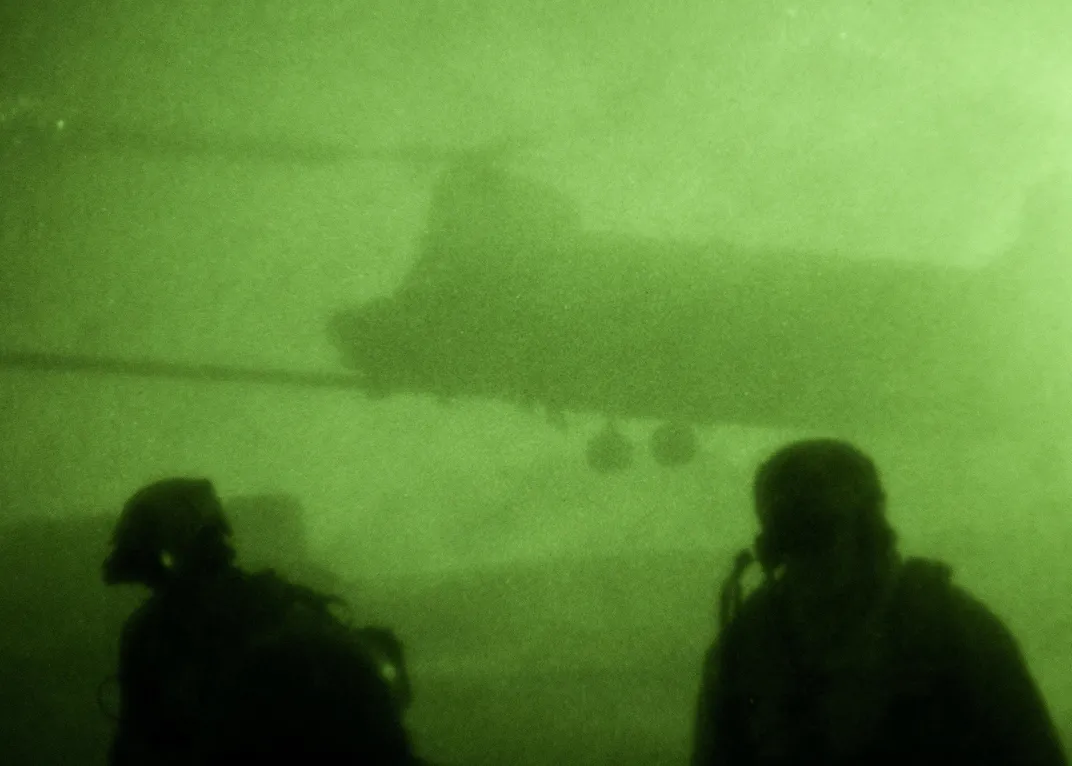
Special Operations
Tony Brooks, Passenger, MH-47D
[Operation] Red Wings was unique because of the terrain and conditions. It was at high altitude—nearly 10,000 feet above sea level—and the terrain was incredibly steep and rugged. It was also during the summer, and the region was pounded every afternoon by intense thunderstorms that would often last far into the night. There was no way we could have done an airborne insertion [parachuting in], as you’d have guys scattered all over the mountain. The 160th [Special Operations Aviation Regiment] Chinooks were the only way in for us.
We flew in them a lot; they were true workhorses in both Afghanistan and Iraq. It was amazing to be in a helicopter and actually have room and not be packed in like sardines! And they’re so powerful—we regularly fit an entire platoon of Rangers in them [with] extra gear, and they could fly high above even the high mountains of Afghanistan—and fast. Another great thing about the Chinooks of the 160th was that not only could they deliver us anywhere in Iraq or Afghanistan quickly onto any landing zone, but because they’re so heavily armed, they also could loiter around and provide gunship overwatch for us. No other helicopter can do that.
The insert onto Sawtalo Sar [Mountain, in Kunar Province] for Red Wings was a real eye-opener. It really demonstrated how incredible not only the Chinook was as an aircraft, but how great the pilots and crew of the 160th are. We inserted late at night, in foggy and cloudy conditions. The pilots brought us to a hover at the uppermost part of Sawtalo Sar and deployed the fast rope. Looking down, I could see nothing but the soup of fog through my night-vision goggles. These pilots were so incredible, they held the bird rock solid as we slid through the heights at nearly 10,000 feet onto the mountain. Then just like that, the bird was gone into the night.
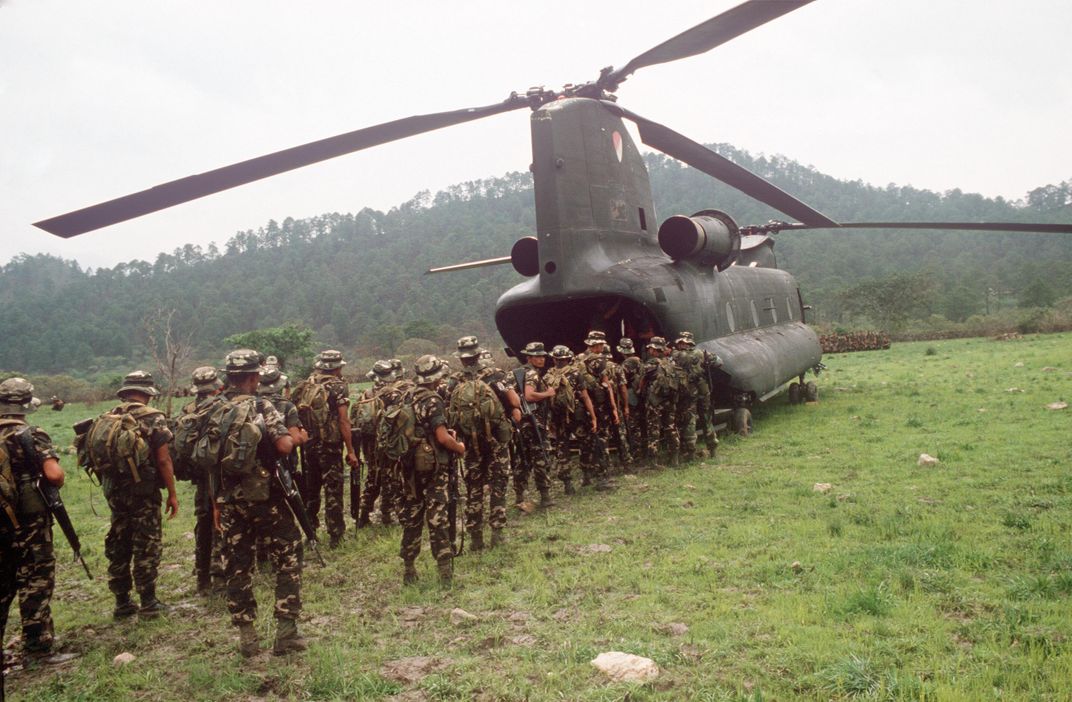
Desert Storm Sling-load-Palooza
Kirk Kuykendall, Crew Chief, CH-47D
The Chinook in [Operation] Desert Storm was pivotal. The Army sent pretty much every Chinook they had over there—they were all D models, relatively new at the time. Our main mission at the beginning was hauling fuel for the advancing ground forces. Each Chinook sling-loaded four 500-gallon [bladders] of fuel. After we landed, we reconfigured to haul back captured Iraqi prisoners. The Chinook made it possible for the advancing ground forces to keep advancing. They were all over the sky. I remember coming in to this one [forward arming and refueling point], and it was a huge one with 30 spots. Not only was it always full, but there were always Chinooks circling it, waiting to refuel.
Although our primary mission at the outset was hauling fuel, we also carried pretty much everything else over the course of the deployment—artillery tubes, ammunition, food, water—we even slung out an intact, captured [Mil] Mi-24 Hind attack helicopter. It was sling-load-palooza.
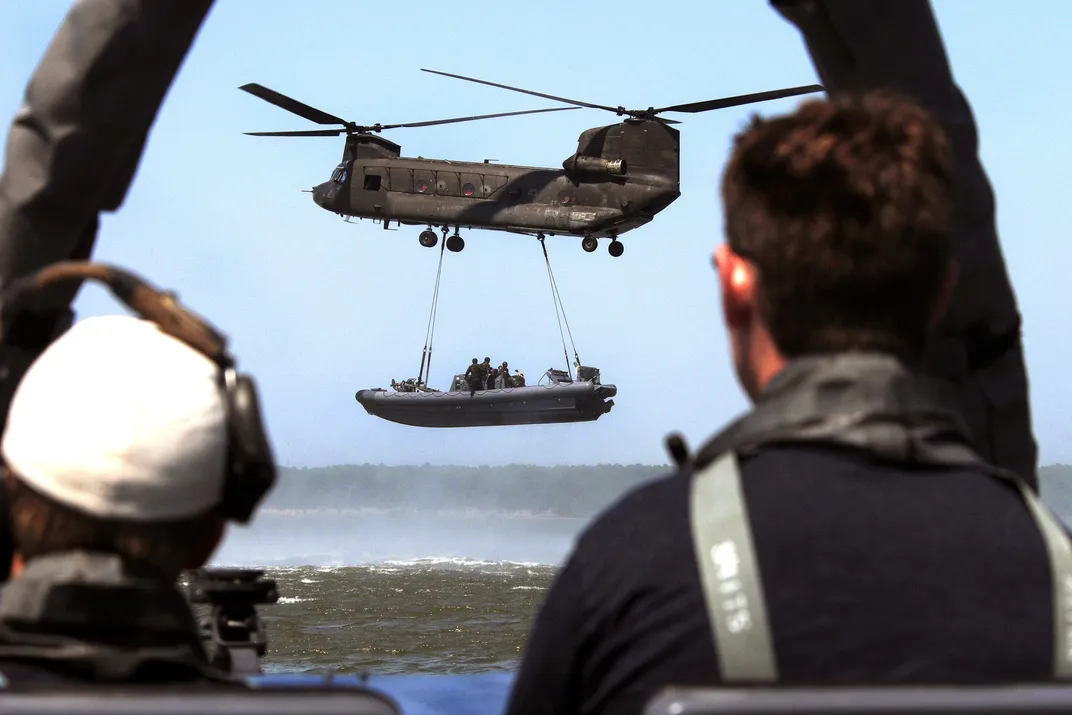
Packing, unpacking, repacking
Jordan Hill, Flight Engineer, CH-47F
My most recent deployment, in 2015, was to Iraq, but we also spent time in Kuwait. We were flying the new F model, and we dealt mostly with internal loads. For me, we can talk all day long about fast roping or sling loading underneath the helicopter, but I was always most amazed by how much stuff we could fit inside the helicopter. The F model makes it incredibly easy to handle internal loads. Just flip the floor panels over and there are rollers, to roll cargo on and off. Prior to the F, you had to use separate roller panels for cargo handling.
We did a lot of what was called “ring routes” during the deployment, where we flew pretty much a regular route from one base to another, delivering anything and everything. We not only stacked cargo floor to ceiling, we had it perfectly distributed so each destination’s load was ready for quick offload. As a flight engineer in a Chinook doing ring routes, you have to be a master Tetris [video game] player. I’ll never forget one day we did a VIP flight for Vice President Joe Biden, then once back we loaded up for a ring flight, and our gross takeoff weight was 49,999 pounds, which is one pound under the max we’re allowed to fly. We played Tetris with the cargo along the entire route.
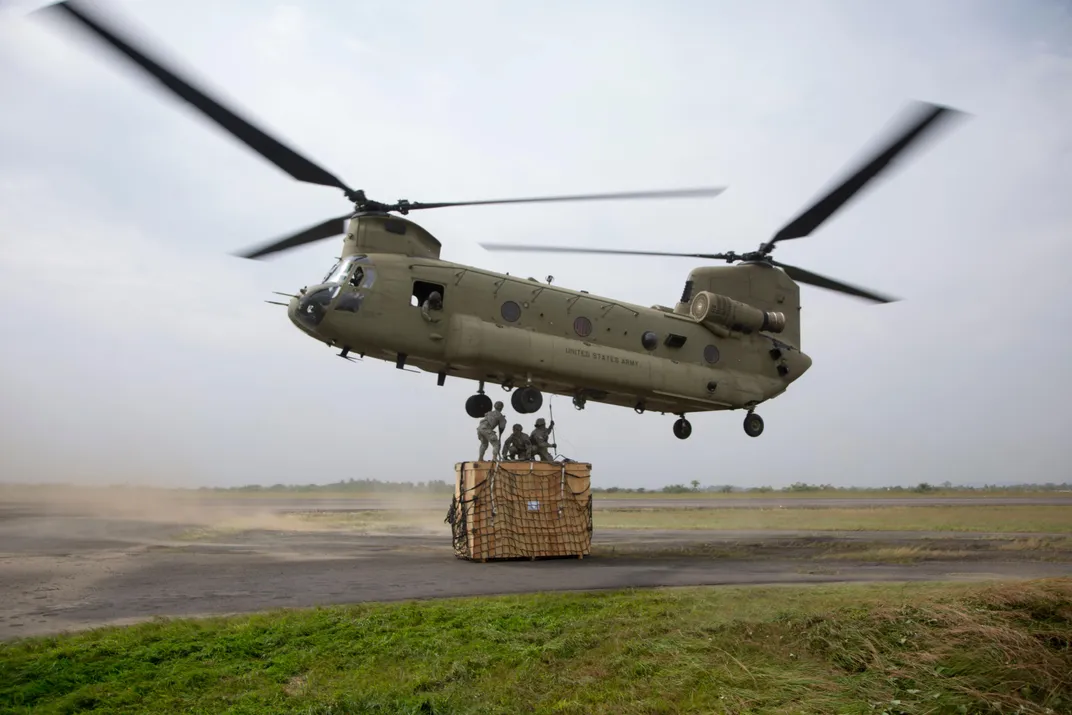
Teamwork
Jeremy Maddox, Flight Engineer, CH-47F
In July [2018], we got the alert that a solo climber needed to be rescued near the summit of Mount Hood. He’d made a cellphone call, and when six ground rescuers got to him, they determined that the warming conditions—with rock and ice-fall—made it too dangerous to get him off the mountain on foot; he needed to be lifted off by helicopter.
After picking up four PJs [U.S. Air Force pararescuemen] at a soccer field from a small town about 10 miles from Mount Hood, we sped toward the scene. The plan was to do a four-wheel pinnacle landing [all four wheels touch the surface, but the pilots hold power so it’s a “hover on the ground”] on Hood’s summit and load the rescuers and the injured. We intentionally flew relatively low on fuel to save weight, and got into a hover over the summit. I was on the rear ramp, laying flat with my head craned off the ramp’s edge to help guide us down. But the summit was only three feet wide and we, as a crew, decided to try to do a two-wheel pinnacle landing in a small bowl just below the rescuers. We knew it would be a really tough maneuver as the bowl was small and the slope was really steep. There was literally no room for error. What made it possible was the F-model’s avionics and flight control system—and crew coordination. The pilots can pick a point in space and hold it there, then go in any direction in exactly one-foot increments. Between me on the ramp, James McNight on the left side, and Steven Kirkpatrick on the right, we talked the pilot Don Ford [using the F’s advanced flight control system] and the copilot John Hoffman down onto the snow. As soon as the wheels touched the mountain, Ford took full control of the aircraft and held it rock solid as three of the pararescuemen exited. With only the two rear wheels touching, and the rotors spinning just four feet above the slope, they acted quickly and calmly. As each person climbed aboard, the center of gravity of the helicopter changed, but Ford kept the aircraft steady as the three of us in the back acted as his eyes, doing constant callouts. Once everyone was loaded on—after about three minutes—Ford lifted the Chinook back into the air and sped away from the mountain, then handed the controls off to Hoffman. Ford’s muscles were fatigued from holding the Chinook steady at that altitude with all the changes in center of gravity. It was a hairy situation, but the best crew coordination I’d ever witnessed—combined with the flight controls of the F-model—got us through it.
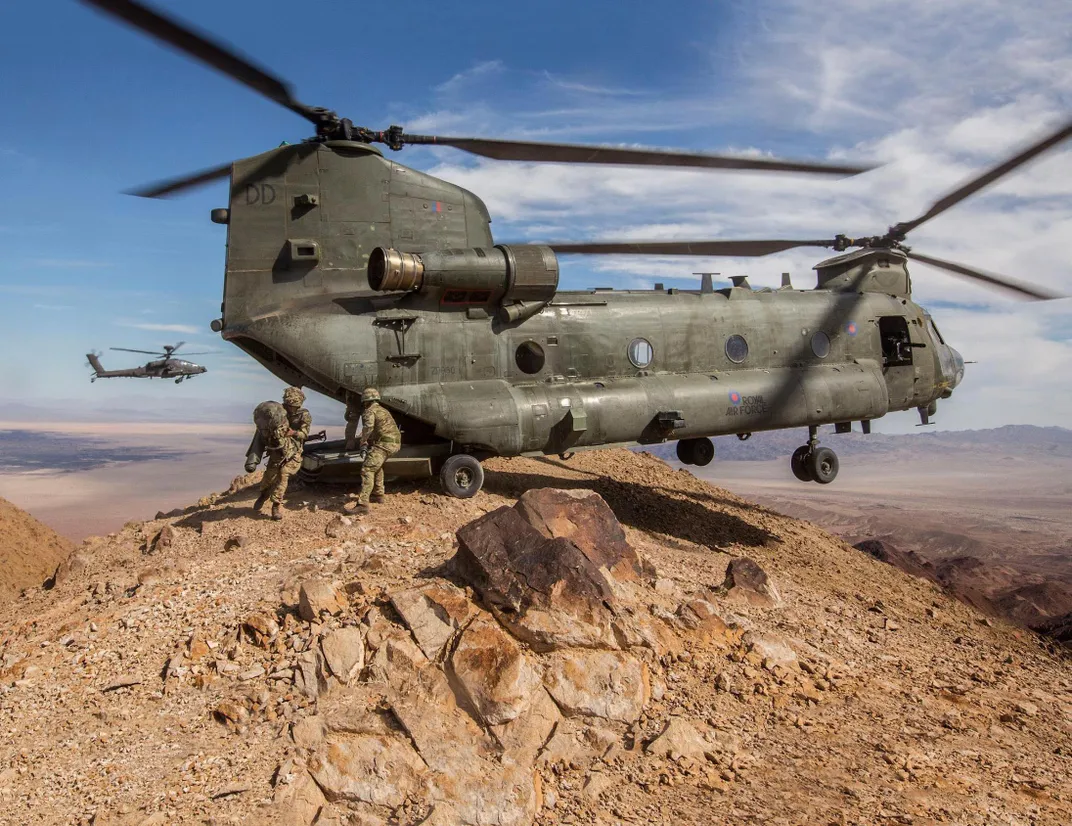
Darkness, Dust, and Duct Tape
Derek Johnson, Pilot, CH-47F
We were based out of Kandahar Airfield, in southern Afghanistan, and we did all types of missions, [some] in support of special operations, which always took place at night. These were often conducted where there was less than five percent lunar illumination. One night, in July 2017, we were part of an operation to take down a high-value Taliban target in Helmand Province. I was the pilot of the lead ship of two Chinooks. It took us about 50 minutes to get to the special operations personnel at their compound. We loaded a total of 59 passengers, then headed toward the target. We flew fast and low—under 1,000 feet until a couple of kilometers out, then dropped down below 100 feet, then we landed just under a kilometer away, offloaded everyone, and returned to the compound about eight minutes away. After we shut down our aircraft, the second came in and landed [at the compound], and I heard a whistling sound. When they shut down we found that they had taken ground fire. Two feet of one of the rotors was missing, and there were six bullet holes in other rotors. With the force needing to be extracted in 40 minutes, there was no time to get another Chinook, and certainly no time to do repairs. We decided to exfiltrate all 59 troops in one bird.
I ran the numbers. The altitude was 4,000 feet, it was hot (being July), and the Chinook would be loaded to the max, not to mention the dusty and dark conditions. But I calculated that we could do it, barely. We got back out to the target compound and loaded everyone on—people were crammed on seats and sitting on the floor. Some stood. I had to pull 99 percent power just to lift off, but we got off the ground. The dust created a brown out, but the F model’s flight control system allowed us to fly with confidence, despite the darkness and low visibility. Once at 300 feet, well clear of any obstacles, I pushed the nose forward and was then able to come off the power a bit. Eight minutes later we came into a hover directly over the small landing zone at the compound and brought it down spot-on.
The next problem was getting the shot-up Chinook back to Kandahar. “You duct taped the rotors?!” our colonel said when the pilots requested permission to fly back. Indeed the crew had patched up the rotors with tape, and that’s all it needed to fly. Despite the missing portions of rotors, it made the 50-minute flight just fine, cruising between 7,000 and 8,000 feet most of the way.
/https://tf-cmsv2-smithsonianmag-media.s3.amazonaws.com/accounts/headshot/ED_DARACK.jpg)
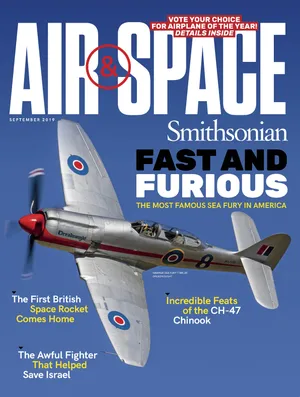
/https://tf-cmsv2-smithsonianmag-media.s3.amazonaws.com/accounts/headshot/ED_DARACK.jpg)